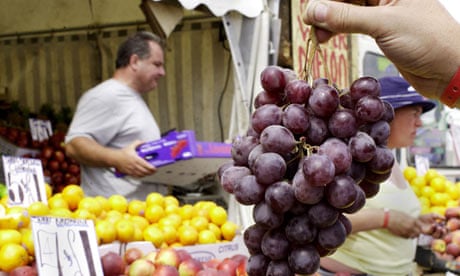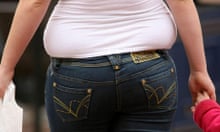British households have cut back on clothes and furniture spending to cope with a sharp rise in petrol bills, according to the government's annual Family Spending survey.
The Office for National Statistics revealed that households on average spent a record £483.60 a week in 2011, up £10 on the year before – but much of the increase was gobbled up by a 9% rise in spending on petrol.
The figures also reveal that spending is falling fastest among the poorest, and suggest the "squeezed middle" may be a statistical myth.
On average in 2011 the bottom 10% of households spent £187.20 a week, down 9% on the £203.10 a year earlier. The middle "decile" of households saw their spending rise from £491.50 to £508.40 a week.
The typical British household now spends 20% more meeting transport costs – £65.70 a week – than on food and drink, which costs the average family £54.80 a week.
Rising car insurance premiums are also hitting family budgets, the figures revealed. The typical household spent £488.80 on car insurance in 2011, a 17.5% rise on the £416 cost in 2010. Spending on car insurance is now a third higher than the total spent on fresh fruit and vegetables.
To pay for the sharp rise in transport costs, British families are delaying the purchase of new sofas and beds. The ONS report found that spending on "household goods and services" – mostly furniture – fell by £4.10 to £27.30 a week.
It's not just the sofa that may be looking a little threadbare; so are our clothes. The ONS said spending on clothing was down from £18.60 to £17.60 a week, with women in particular cutting back on new shoes. Spending on female footwear fell from £2.40 to £2.10 a week.
The survey reveals the vast differences in spending nationally and across age and income groups. Londoners spent the most each week, averaging £574.90, nearly half as much again as the typical household in the north-east which spent £384.20 a week.
The bottom 10% of households spent an average of £187.20 a week compared with the £1,750 splashed out weekly by the top 10% of households.
The rising cost of gas and electricity is hitting low income groups hardest. The ONS found that the bottom income group now spends nearly a quarter of its total income on heating their homes, compared with just 8% by the rich.
Well-off households also spend comparatively little of their total income on food and drink (8%) compared with the bottom 10% (16%).
In an echo of the 1930s great depression, when spending on cinema entrance soared despite an economic collapse, Britons have once again turned to the silver screen for entertainment during a recession.
Spending on cinema tickets and sports events rose by 11% to £19.80 a week from £17.80. Spending on newspapers and books, however, was flat at £5.70 a week, and we cut back on computers, although that is more a reflection of the falling price of electronics than fewer purchases.




Comments (…)
Sign in or create your Guardian account to join the discussion